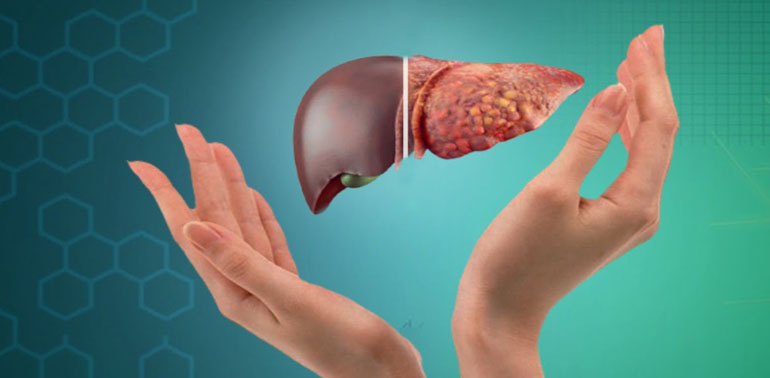What is Fatty Liver Disease
Fatty liver disease (FLD) refers to a condition where there is an excessive buildup of fat in the liver cells. While it’s normal for the liver to contain some fat, excessive accumulation can lead to liver inflammation, liver damage, and even more serious conditions like cirrhosis or liver cancer.
Fatty liver disease is categorized into two main types:
- Non-Alcoholic Fatty Liver Disease (NAFLD)
- Alcoholic Fatty Liver Disease (AFLD)
Types of Fatty Liver Disease
1. Non-Alcoholic Fatty Liver Disease (NAFLD)
NAFLD is the most common form of fatty liver disease and is unrelated to alcohol consumption. It’s often associated with:
- Obesity
- Type 2 diabetes
- High cholesterol or triglycerides
- High blood pressure
- Metabolic syndrome
NAFLD can range from simple fat accumulation (non-alcoholic fatty liver) to more serious liver damage, including non-alcoholic steatohepatitis (NASH), which can lead to liver fibrosis, cirrhosis, and potentially liver cancer.
2. Alcoholic Fatty Liver Disease (AFLD)
AFLD occurs due to heavy or chronic alcohol consumption. The liver becomes inflamed, and fat accumulates in the liver cells, impairing liver function. While some alcohol consumption may not lead to AFLD, excessive or prolonged drinking can result in liver damage and increase the risk of cirrhosis or liver cancer.
Causes and Risk Factors
Fatty liver disease can be caused by various factors, and its progression is influenced by lifestyle choices, genetics, and underlying health conditions. Key risk factors include:
- Obesity and being overweight
- Type 2 diabetes and insulin resistance
- Poor diet, especially high in sugar, fats, and refined carbs
- Sedentary lifestyle
- Excessive alcohol intake (for AFLD)
- High cholesterol or triglycerides
- Age (more common in adults over 40)
- Family history of liver disease
Symptoms of Fatty Liver Disease
In the early stages, fatty liver disease may show few or no symptoms, making it difficult to detect. However, as the disease progresses, you may experience:
- Fatigue
- Abdominal discomfort or pain, particularly in the upper right side
- Unexplained weight loss
- Swelling in the abdomen or legs
- Yellowing of the skin or eyes (jaundice)
- Dark urine
- Enlarged liver (hepatomegaly)
If you experience any of these symptoms, it’s important to seek medical attention promptly.
Diagnosis of Fatty Liver Disease
To diagnose fatty liver disease, your healthcare provider will typically use a combination of:
- Physical examination to check for signs of liver enlargement.
- Blood tests to measure liver enzymes and assess liver function.
- Imaging tests like ultrasound, CT scans, or MRI to detect fat buildup in the liver.
- Liver biopsy (in some cases) to determine the extent of liver damage, especially if there’s concern about NASH or cirrhosis.
Treatment and Management
While there is no specific medication approved to treat fatty liver disease, the condition can often be managed and even reversed through lifestyle changes and medical interventions. Treatment focuses on:
- Weight loss: Gradual weight loss (5-10% of body weight) has been shown to reduce fat buildup in the liver.
- Healthy diet: A balanced diet rich in fruits, vegetables, whole grains, lean proteins, and healthy fats is recommended. Reducing the intake of sugary foods, refined carbs, and processed fats is crucial.
- Exercise: Regular physical activity (at least 150 minutes per week) can help reduce liver fat and improve overall health.
- Controlling underlying conditions: Proper management of diabetes, high cholesterol, high blood pressure, and other related conditions is essential.
- Alcohol cessation: For those with AFLD, reducing or eliminating alcohol consumption is critical for liver health.
In some cases, medications may be prescribed to treat related conditions such as diabetes, cholesterol, or to reduce inflammation in the liver.
Preventing Fatty Liver Disease
Prevention of fatty liver disease largely revolves around lifestyle choices:
- Maintain a healthy weight: Achieving and maintaining a healthy body weight is one of the best ways to prevent fatty liver disease.
- Eat a balanced diet: Focus on whole foods, healthy fats (like those found in nuts, seeds, and olive oil), lean protein sources, and plenty of fiber-rich fruits and vegetables.
- Exercise regularly: Staying active helps maintain a healthy weight and improves overall metabolic function.
- Limit alcohol consumption: If you consume alcohol, do so in moderation to avoid excessive strain on your liver.
- Monitor health conditions: Regular check-ups to manage diabetes, high blood pressure, and cholesterol can help prevent the progression of fatty liver disease.
When to See a Doctor
If you have risk factors for fatty liver disease or notice symptoms such as fatigue, unexplained weight loss, or abdominal discomfort, it’s important to schedule a visit with your healthcare provider. Early diagnosis and intervention can prevent complications and improve long-term liver health.


 Get Clinic or Online Consultation
Get Clinic or Online Consultation